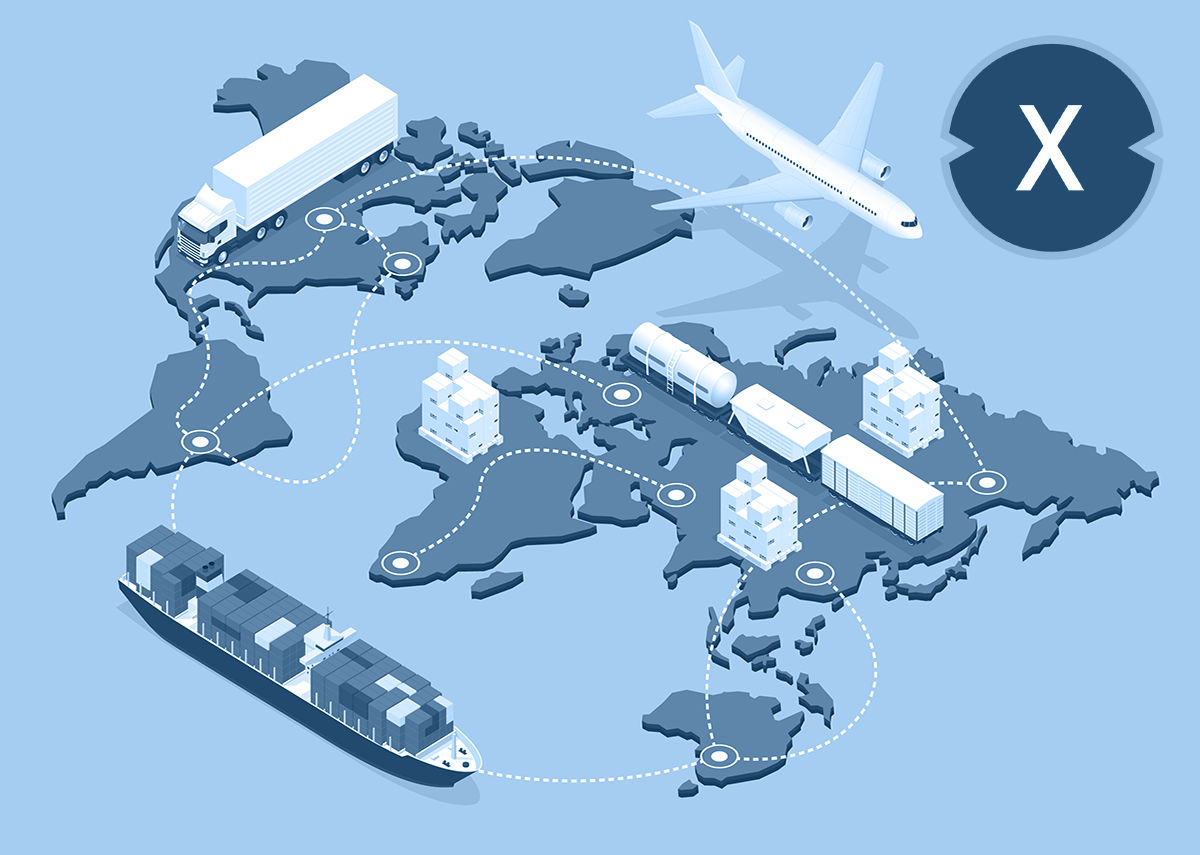
Disrupted supply chains in Europe and the USA – Image: Xpert.Digital / Golden Sikorka|Shutterstock.com
Supply chains in Europe and the USA are still often disrupted
The supply chains of many companies are still affected by the Corona crisis. This particularly affects the USA and the Eurozone. This is shown by the graphic and based on data from the International Monetary Fund (IMF) . The supply chains in China and emerging markets, however, are less affected. This index is calculated by the IMF from the difference between the delivery times and production indices of the purchasing managers' index PMI. A high value means many disruptions in the supply chains.
Background to the development: Many countries have introduced numerous anti-pandemic measures that have caused severe delays in value and supply chains. For example, control and quarantine zones in logistical hubs have led to delivery backlogs of goods. As a result, many supplier companies were hindered in their production and were no longer able to fully meet their delivery obligations. And missing supplier parts can quickly have a massive impact on production processes. Added to this are the absence of workers due to illness or travel restrictions.
According to the IMF, supply chain disruptions, along with rising raw material prices and consumers' accumulated savings, are one reason for rising consumer prices. According to the IMF, this global inflation will peak at the end of 2021 and then fall back to pre-crisis levels in many countries by mid-2022.
Supply chains in Europe and the USA are still often disrupted
The Supply Chains of Many Companies Are Still Affected by the Corona Crisis. This primary affects the USA and the Euro Zone. This is Shown in the Graphic Below Based on Data from the International Monetary Fund (IMF). Supply Chains in China and Emerging Markets, On The Other Hand, Are Less Affected. This index is calculated by the IMF from the difference between the difference deliversry times and production indices of the purchasing managers' index pmi. A High Value here Means many disruptions in the supply chains.
The background to this development is that many countries have introduced numerous anti-pandemic measures that have triggered severe delays in value and supply chains. For example, control and quarantine zones in logistical hubs have led to supply backlogs of goods. As a result, many supplier companies were hampered in their production and could no longer fully meet their delivery obligations. And missing supplier parts can quickly have a massive impact on production processes. Added to this is the loss of labor due to illness or travel restrictions.
According to the IMF, supply chain disruptions, along with rising commodity prices and accumulated consumer savings, are one reason for rising consumer prices. According to the IMF, this global inflation will peak at the end of 2021 and then fall back to pre-crisis levels in many countries in mid-2022.
Xpert.Digital – Konrad Wolfenstein
Xpert.Digital is a hub for industry with a focus on digitalization, mechanical engineering, logistics/intralogistics and photovoltaics.
With our 360° business development solution, we support well-known companies from new business to after sales.
Market intelligence, smarketing, marketing automation, content development, PR, mail campaigns, personalized social media and lead nurturing are part of our digital tools.
You can find out more at: www.xpert.digital – www.xpert.solar – www.xpert.plus

